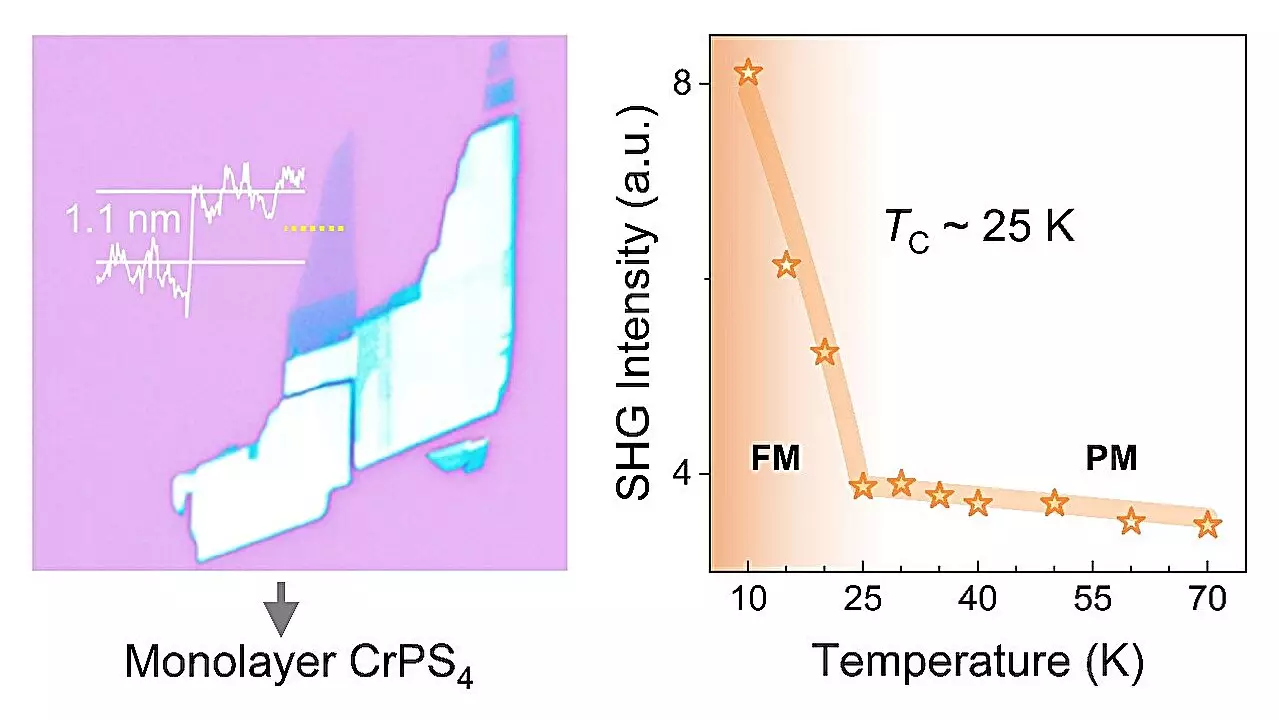One of the most intriguing optical phenomena, second harmonic generation (SHG), has recently gained attention due to its sensitivity to symmetry breaking in materials. Initially, SHG was only observed in crystals with broken symmetry, referred to as the i type. However, it was later discovered that SHG can also occur in magnetic systems, known as the c type, although it is typically much weaker.
In a groundbreaking study led by Professor Sheng Zhigao and his research team at the Hefei Institutes of Physical Science, a remarkable discovery was made regarding the nonlinear magnetic second harmonic generation (MSHG) in monolayer CrPS4. This two-dimensional antiferromagnetic material exhibited a unique behavior where the ferromagnetic order induced a strong c type SHG effect, unlike the bulk and even-layered CrPS4 samples.
The Significance of the Findings
The observation of ferromagnetic order induced c type SHG effects in a 2D magnet, under the electric-dipole approximation, is unprecedented. This phenomenon is attributed to the dual breaking of spatial and time inversion symmetries, leading to a signal strength comparable to that of i type SHG, which arises from the breaking of crystal structural symmetry. Such a discovery is extremely rare among all known magnetic materials and opens up new possibilities for harnessing the unique optical properties of two-dimensional van der Waals materials.
The implications of this study are far-reaching, particularly in the field of optoelectronics. By understanding the relationship between magnetic order and SHG effects in two-dimensional materials, researchers can potentially design novel optical devices with enhanced performance and efficiency. The ability to manipulate nonlinear optical properties through magnetic control paves the way for a new generation of optoelectronic technologies with unprecedented capabilities.
As the research into nonlinear magnetic second harmonic generation continues to evolve, future studies may focus on exploring similar phenomena in other two-dimensional materials with different magnetic configurations. By expanding our knowledge of the underlying mechanisms behind these optical effects, we can further harness the potential of unconventional materials for advanced optoelectronic applications. The journey towards unlocking the full potential of nonlinear optical properties in magnetic systems is just beginning, and the possibilities are endless.


Leave a Reply